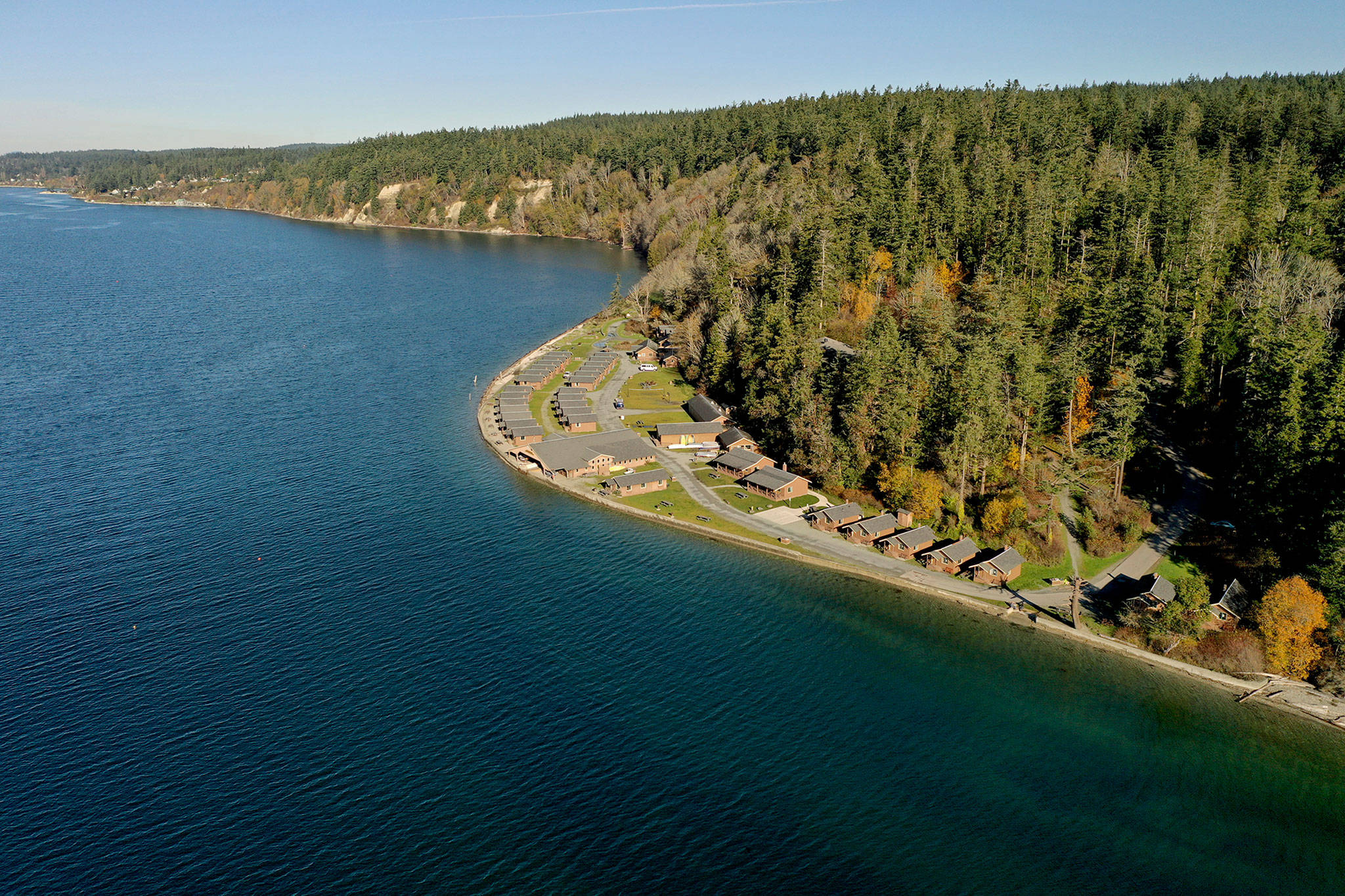By Tom Burke / Herald columnist
CAMANO ISLAND — I’m feelin’ like someone who runs up to a crowd all excited and enthused, shouting how he’s just discovered something new and wonderful and “Wow, you gotta hear about this!” only to be told, “Where have you been, everybody knows about that!”
Like when I first visited Mount Baker and discovered the base lodge was “higher” (at 3,500 feet) than the tippy-top summit of Loon Mountain (3,064 feet), my favorite New Hampshire ski area; or drove to Hurricane Ridge and was overpowered by the Olympics and stunned I didn’t need an Alaskan cruise to see a glacier; “discovered” Neah Bay and the amazing artifacts at the Makah Museum; or took my second trip to Leavenworth and found so much more than Bavarian shops and schnitzel.
As a relative new-comer to Western Washington, how did I know “everyone” already knew about all that stuff.
My latest “discovery”: Cama Beach Historical State Park. (I know, I know, everybody knows about Cama Beach.) It’s 486 acres of wooded wonderland hard by the shores of Puget Sound’s Saratoga Passage on Camano Island. A Washington family tradition, preserved as state land, and “offering a footprint to the past” as well as “a well-directed step in a future that combines contemporary park and educational facilities with its historic landscape.” (Translation: A bunch-a-fun found there!)
“What kind of fun?” you ask. Real, retro, family fun.
Fishin’ and forests. Small boats for simply messin’ ‘round. A couple of miles of shoreline for treasures washed up on the beach. Fifteen miles of trails for biking and hiking; crafts and campfire programs; and naturalists to teach about critters, trees, plants, fish, and shells.
Oh, and clean, comfortable cabins with electric, beds, running water, a microwave (no stove), a fridge, heat, and tables and chairs; bridging the gap between a tent and a motel room.
What there ain’t: linens, kitchen gear, an en-suite bathroom/shower, waterslides, skateboard rails, (over) organized sports, thrill rides, TV(!), and shuttling kids between activities.
Growing up in the 1950s and ’60s our family summer-vacationed at Otis’s Cozy Cabins, on Lake Winona, near Ashland, New Hampshire. Much like Cama Beach we had to find our own fun fishing, swimming and adventuring in the N.H. woods. And the memory of my dad, baiting my hook with a crawdad (for small mouth bass), in his ratty old white T-shirt (Mom would only let him wear it fishing) and a Lucky Strike dangling from his lower lip, is one I’ve treasured my whole life.
Cama Beach offers the opportunity for similar memories: day-time fishing in something rented from the on-site outpost of the Center for Wooden Boats; grilled goodies for dinner (no stove, remember); family board games; and just sitting ‘round watching the stars or the boats or the waves passing by.
Before it was a state park, Cama Beach was a “resort” owned and operated by the Stradley and Risk families. Opened in 1934 it catered mostly to working- and middle-class Seattle folks and provided most everything they’d need for a week’s holiday. It was easy to reach, cabins were furnished with all the essentials, there was a store with all the basics, you could rent boats and fishing gear, and there was a rec hall for evening cards or conversation, kids games, checkers, movies, and an occasional square dance.
But before the Park was a park, or a resort, the area was an 1890s lumber camp and for 1,600 years before that, a summer encampment for many of the people of the Swinomish and Tulalip tribes. Known as Ya-Lked and WHEE-uh-PUHK-wuhb it was where indigenous people went to harvest fish and shellfish for the upcoming winter.
The resort as a business came to an end in 1989 because of a variety of socio-environmental-economic factors, including fewer fish in the sound, low-priced air travel, faster trips to further-away places, and cabins where guests didn’t cook on wood stoves or walk in the dark to the bathroom.
To make a long and valiant story short, there followed a near 20-year campaign waged to first convince the state to turn the ex-resort into a park; and then to figure out the financing; obtain tribal approvals; make improvements; and get the Legislature’s sign-off.
Sign off they did, and on June 21, 2008 the new park was officially opened.
And over the weekend of Feb. 19-21, 2021 I discovered it, 87 years late!
Two final notes: I am more-than-grateful to Gary Worthington for writing “A Guide and History to Cama Beach” on which I leaned heavily; and if you want to rent a cabin this summer, it’s probably too late. All the folks who already know about Cama have a reservation and the place is pretty booked. But like we used to say in the Bronx, “What could it hurt?” to try. So try. Make a memory.
Stay safe. Mask up.
Tom Burke’s email address is t.burke.column@gmail.com.
Talk to us
> Give us your news tips.
> Send us a letter to the editor.
> More Herald contact information.

























